I carried on to a photogenic little pinnacle, behind which the path passed. I had a long rest just before the pinnacle, to try to get some more chocolate inside me before the long haul up the Canaleta. The view down the Gran Acarreo was unbelievable. Its true size was now apparent, because I could see the tiny coloured dots of Alaska Camp at the bottom. The Gran Acarreo was a vast sloping expanse of boulders over two kilometres long by one km wide. Apparently the first people to climb Aconcagua came straight up the Gran Acarreo – it must have been desperately tedious.
I carried on slowly, glancing back every so often to see if there was any sign of the others. The rocks were looser here, and after crossing a few snow patches the path started to climb more steeply as it reached the bottom of the Canaleta. I soon saw Dan coming past the little pinnacle, and a few minutes later he called up to me that there was no sign of Jim. We had a breather, and then attacked the Canaleta.
The Canaleta was effectively an extension of the Gran Acarreo : a huge dogleg stone-shoot that went from where we now stood right up to the col between the south summit and the main summit. Its notoriety was earned from the fact that unlike the stable boulder slopes further down, the loose rocks filling the Canaleta could be expected to give way under every footstep.
Up until this point I had been taking three or four breaths per step, but as we moved into the Canaleta I found that with the increased altitude each step now required five or six breaths. After half an hour we seemed to have made practically no progress, and sat on a rock to rest. The time was just coming up to midday. We knew that the Canaleta represented three hundred metres of height gain, and could be expected to take three hours. The question was : where did the Canaleta officially commence? Had our three hours started yet?
The guided group that I had seen at Independencia came up behind, and I quizzed their leader. She proclaimed that Dan and I would be at the col at the top of the Canaleta at 3pm – the confident and encouraging way she said this instantly dispelled any self doubt that we may have had. Here was someone who was clearly in the right job. We reluctantly got going again, but found that it was virtually impossible to climb continuously. After every four or five minutes of ascent, we were obliged to sit down for just as long, to let our heart rates slow down, and to get as much breath back as the conditions allowed. No matter how slowly we tried to ascend, we couldn’t do without the rests.
The going was steep, and the stones were loose, but with some care it was generally possible to place my feet so that the rocks wouldn’t move under the weight of each footstep. The fact that I had to take five breaths between steps meant that I always had plenty of time to examine the target area of my next step. I could thus decide exactly which bit of rock looked the most stable. The Canaleta was awkward, unpleasant, and astonishingly tiring, but it certainly wasn’t a case of two steps up, one step down all the way, as some people had prophesied.
It was desperately slow going, but at least everyone else was going just as slowly as us. Glancing upwards I would always see that as many people were sitting down as were on their feet. Those who were actually moving were invariably ascending so slowly that their motion was all but imperceptible.
After an hour and a half, the walls of the Canaleta had closed in as we came to the dog-leg. Round the corner to the left the Canaleta widened again, and we could see straight up to the cliffs and boulder slopes immediately below the summit. It looked so ridiculously close – at sea level we could have covered the distance from this point to the summit in twenty minutes. At the present rate, however, we would be unlikely to get to the top in less than two hours, if at all. A few minutes later we actually heard some distant triumphant yells from people who had just reached the top – surely it was unthinkable not to make it now that we were within earshot of the summit? We laboured upwards for another hour – I was now needing at least six breaths per step, which meant that the vast majority of the time I was just standing still, panting.
Dan somehow managed to get hiccups, which caused him to grind to an instant halt. The muscular energy required to hiccup was not much less than the maximum energy his body was capable of putting out at that altitude. Each hiccup was followed by desperate panting, to try to replace the oxygen used by the muscular effort of the last hiccup, before the next hiccup arrived. The situation was complicated by the fact that most hiccup remedies involve holding one’s breath – not something that comes naturally at nearly 7000m, where life revolves around frenetic lung activity. In addition, the whole thing was quite funny, which made getting rid of his hiccups even more challenging. Eventually he succeeded, and the ascent could resume.
The angle of the slope at last started to ease. By half past two we were slowly emerging from the enclosed part of the Canaleta on to the boulder slopes that ran along below the south col. We exchanged a few words with a very fit looking American guide who was slowly overtaking us. He told us about the disastrous bivouac that the Belgian and the Brazilian had made the previous night on the other side of the mountain.
The path curved round to the left below the col, gradually merging with the ridge that linked the col with the summit. I glanced back at one point and noticed that we had just about drawn level with the col. I glanced at my watch : as predicted by the Chilean guide, it was exactly 3pm.
I had expected an increase in wind speed at this point, but it was practically a flat calm. The temperature had been rising all afternoon, and although the shade temperature was undoubtedly still below freezing, it now felt pleasantly warm in the brilliant sunshine. Most of the way up the Canaleta I had had my hood down, and was just wearing my Helly Hansen Polar Mitts on my hands. Any concerns about my toes had long since disappeared – they were as warm as toast.
The path merged with the ridge, and ran along just below the crest. Although it involved unnecessary expenditure of energy, I couldn’t resist the temptation to scramble up to the crest to peer over the edge. The spectacle was awesome. The contrast between the north and south sides of Aconcagua was total. Instead of a thirty five to forty degree slope covered with dry grey rocks, the south side was a blank wall of ice that dropped sheer to the glaciers three vertical kilometres below. The view of the knife-edged snow ridge leading up to the south summit was at last reminiscent of photos from Himalayan expeditions. I knew that I was at 6900m, but all of a sudden it began to look like it.
We had vaguely hoped that once we were out of the Canaleta it would be less strenuous, and that it would then be just a pleasant stroll along the ridge. Unfortunately strolling is a relative term at that altitude. We were only fifty metres below summit altitude, but our ascent rate was now less than two metres per minute. We also had some horizontal distance to cover, so it was going to take us nearly an hour to stroll the last few hundred metres along the ridge.
It had occurred to me a few times during the previous two weeks that it was a shame that Aconcagua wasn’t fifty metres higher – that would have made it just over 7000m and exactly 23,000 feet. However, I was at this moment positively delighted that it was only 22,850 feet.
After forty five minutes of inching our way laboriously up the ridge, I looked back down towards the Canaleta : there seemed to be barely a dozen people still behind us. I hadn’t really taken note of how many had passed us in the Canaleta, but if there were so few left behind then there could in theory be forty in front. I had only noticed four coming down so far, so that would mean that there could be in excess of thirty people on the summit. I hoped it was a big summit.
What little oxygen had been in the atmosphere down at the col didn’t seem to have floated up this far. I was literally within a stone’s-throw of the summit when I ground to a halt. Each step was now requiring ten laboured breaths, and in front there was a final steepening of the ridge just before the top. There were just a few steep rocks up which we would have to scramble to reach a point barely ten metres away, where I could see one or two people sitting and gazing out westwards. It was too long since my last rest, and all I wanted to do was to sit down. Dan was starting the final scramble in determined slow motion. I heard some people behind me – they were five metres lower than me, so they would take at least two minutes to reach me. However, I suddenly thought to myself : “I’m damned if I’m going to be overtaken just here!” : I started scrambling up, using oxygen that I didn’t have. Thirty anaerobic seconds later I came up alongside Dan, just as I was hit by the unsettling realisation that there was nothing above us any more : we had run out of mountain. The familiar grey rocks, which had been in front of our eyes for so long, had all of a sudden been replaced by the lowlands of Argentina stretching away to infinity. The only thing still above us was the impossibly deep blue dome of the sky.
There at our feet was the much photographed aluminium cross, there was the panorama; but all I was interested in doing was lying down, panting, repaying the oxygen debt, and revelling in the luxury of knowing that I wouldn’t have to go up any more.
I couldn’t go up any more. To find any rocks higher than those I was finally touching, would require a journey of 17,000 km… I was sitting on the roof of the southern hemisphere and of the western hemisphere.
There was plenty of space to lie down: the summit was a little triangular plateau that sloped down away from us for some fifteen metres towards the east and south east. We collapsed in a heap a few metres down past the cross, flat on our backs, panting delightedly. After a few minutes I was struck by a sudden thought and propped my head up to look around me. Where was everybody? I had expected there to be about thirty five people up here – I could only see ten. Thus we were about fifteenth to have arrived. With the ten people I had seen fairly close behind us, that meant that there must be twenty five people who were further back still. Or perhaps twenty five people who had given up? I resumed my relaxing examination of the dark blue sky. It was not yet 4pm, and the conditions were perfect.

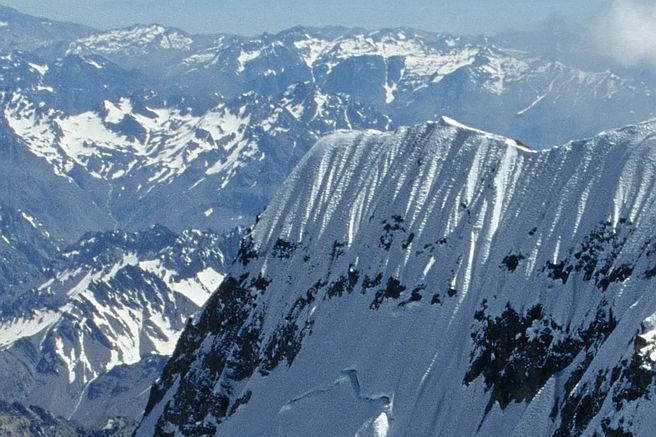

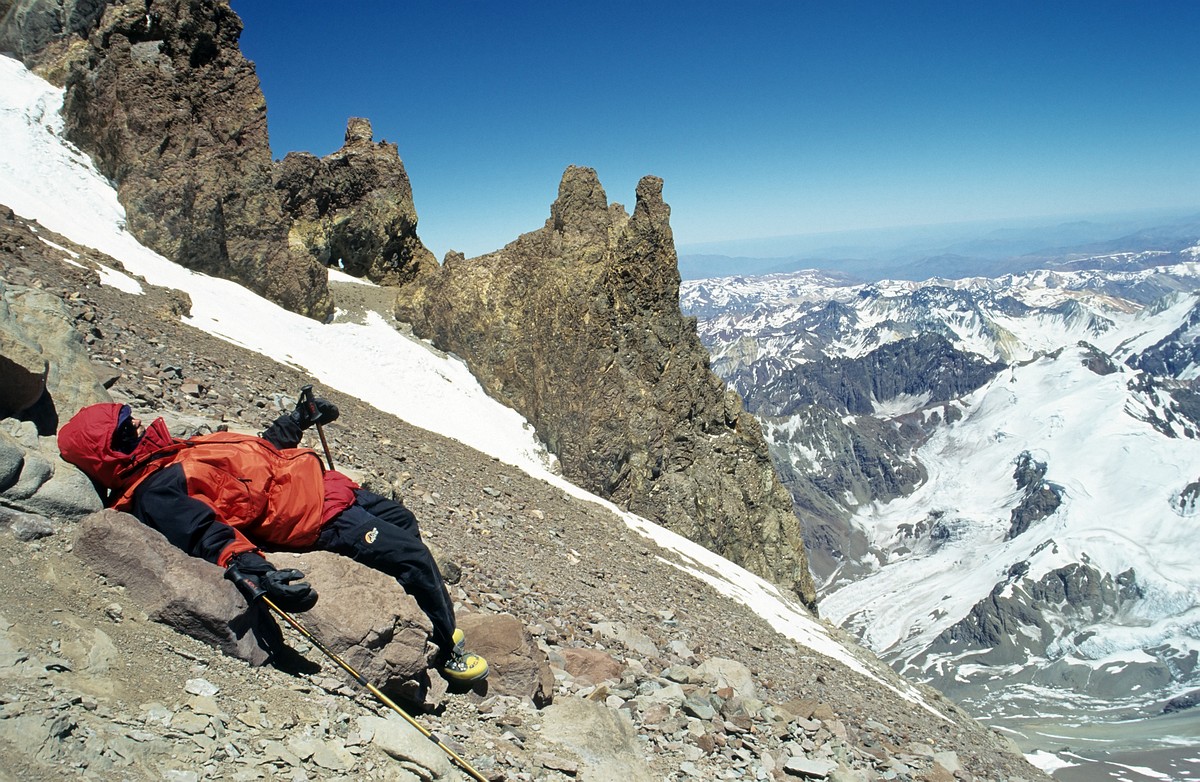
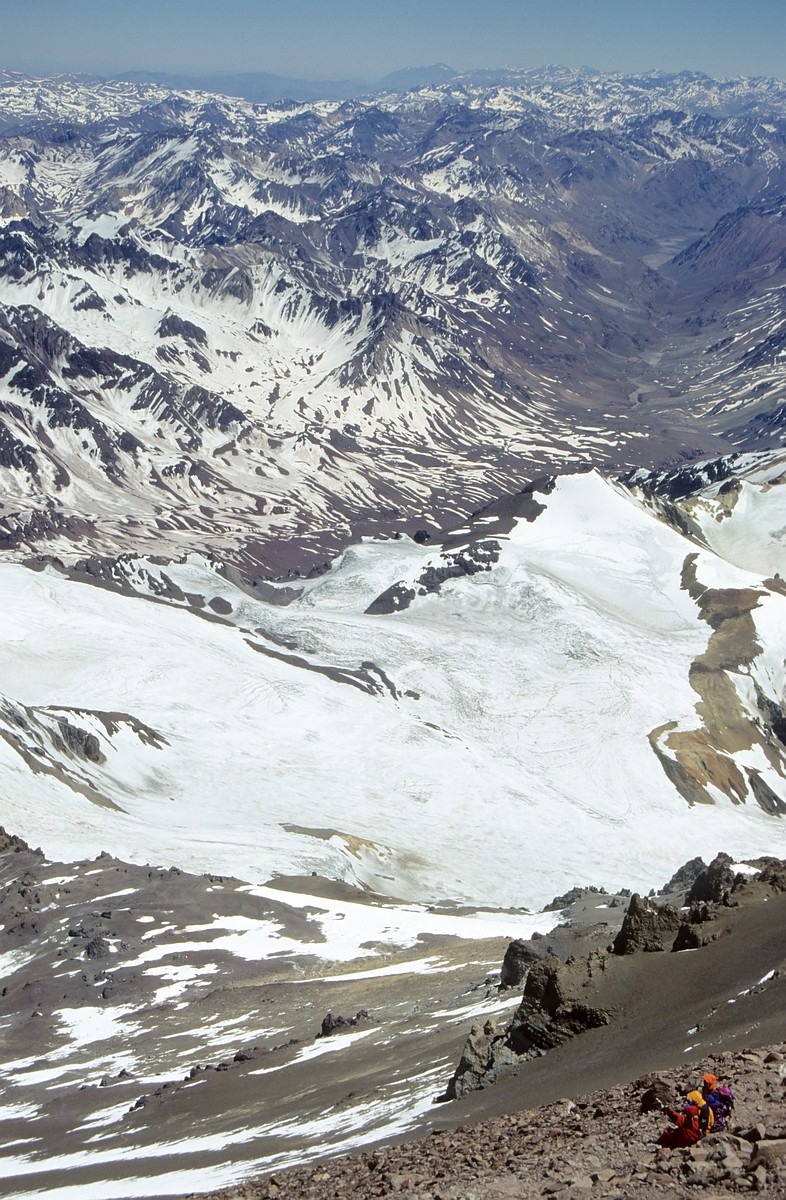
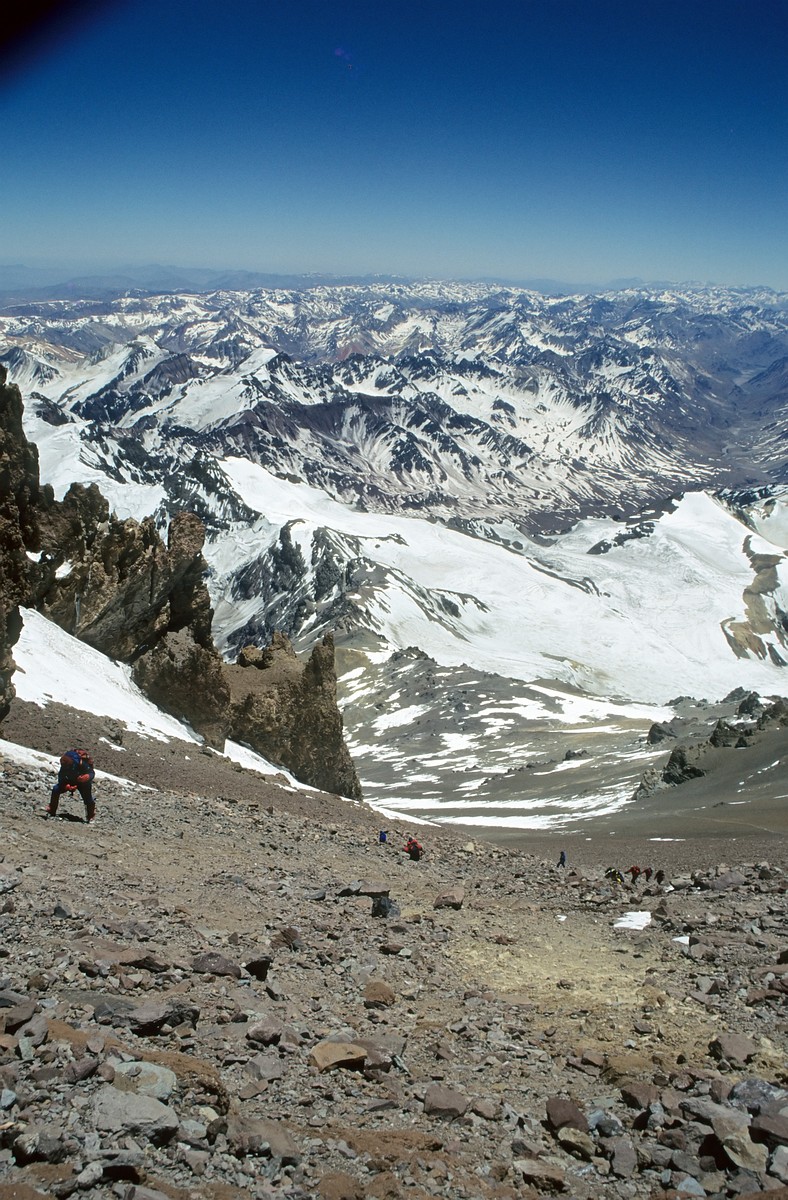

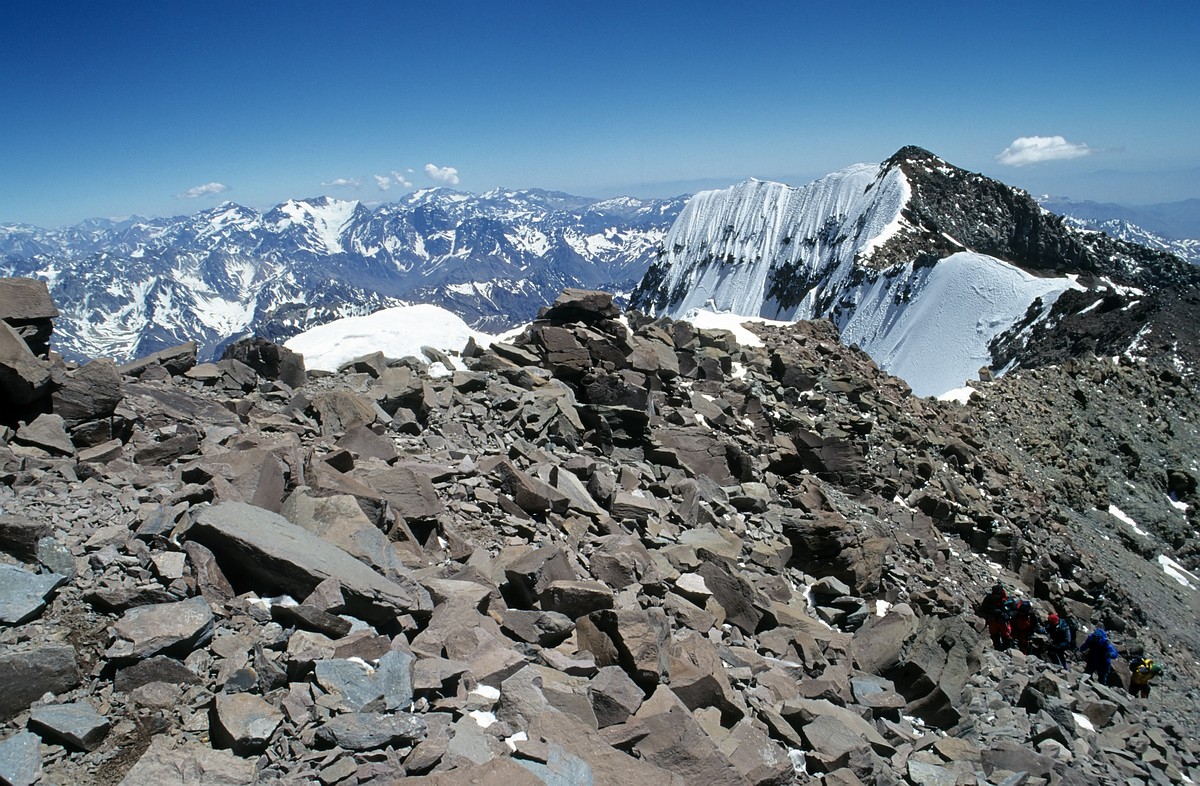

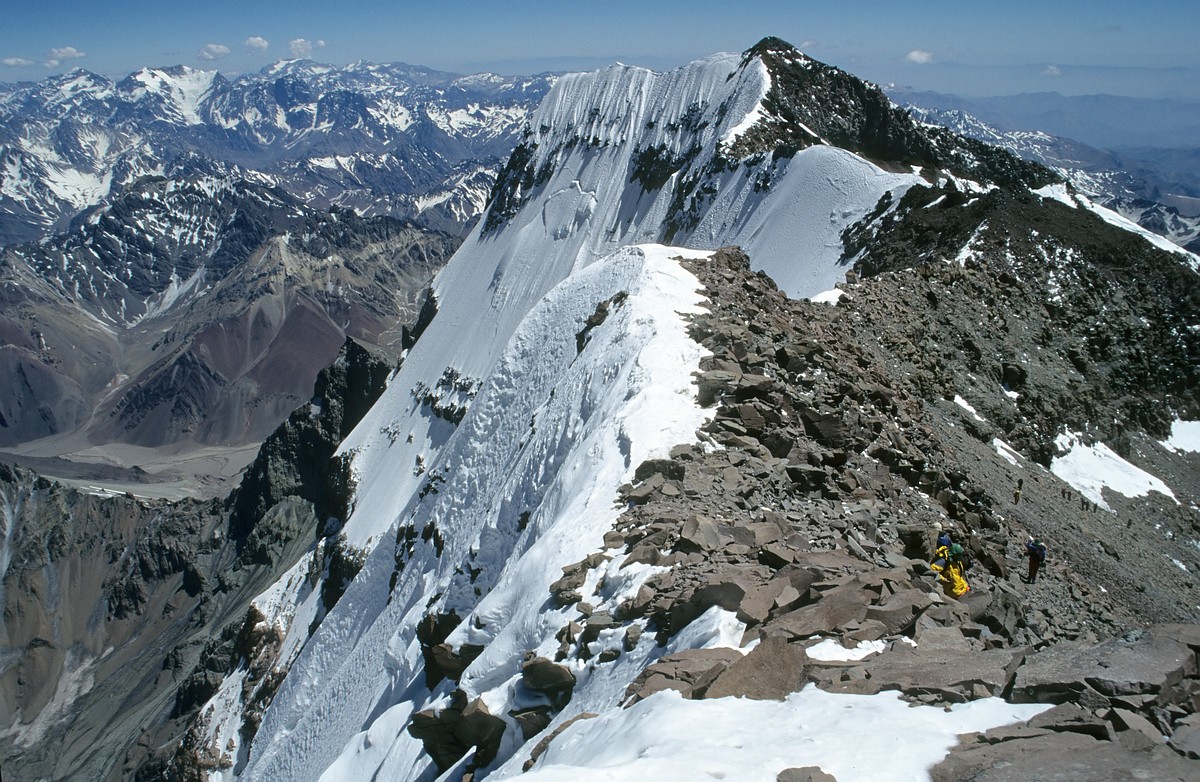
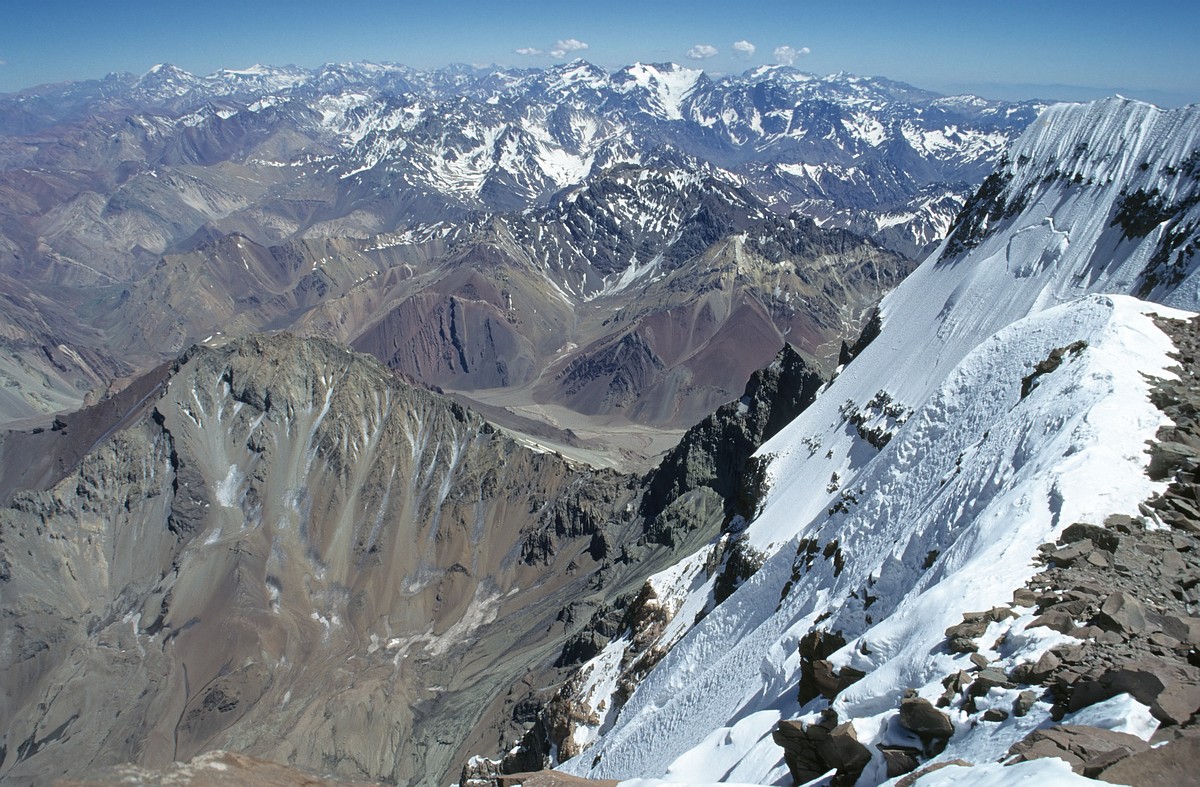
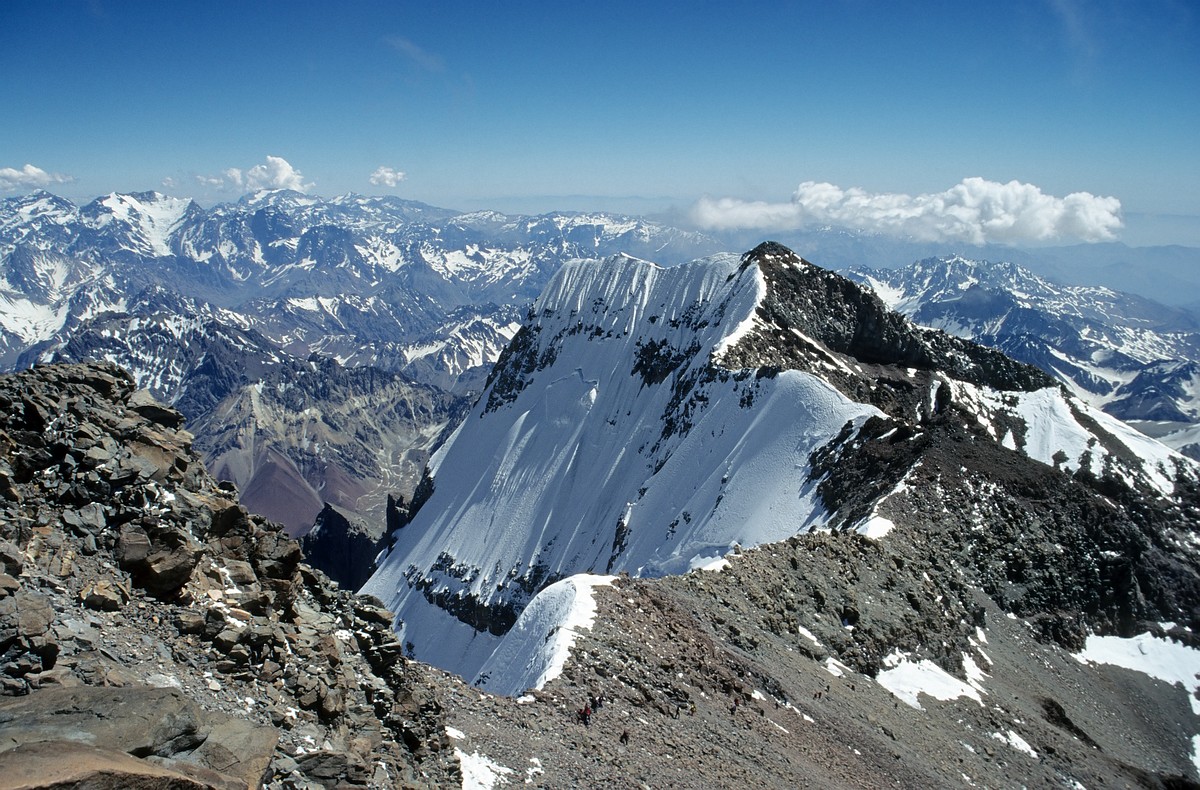
Even though I have read the story before, somehow with these wonderful photos your diary is just as interesting and exciting to read this time as when I read it the first time.